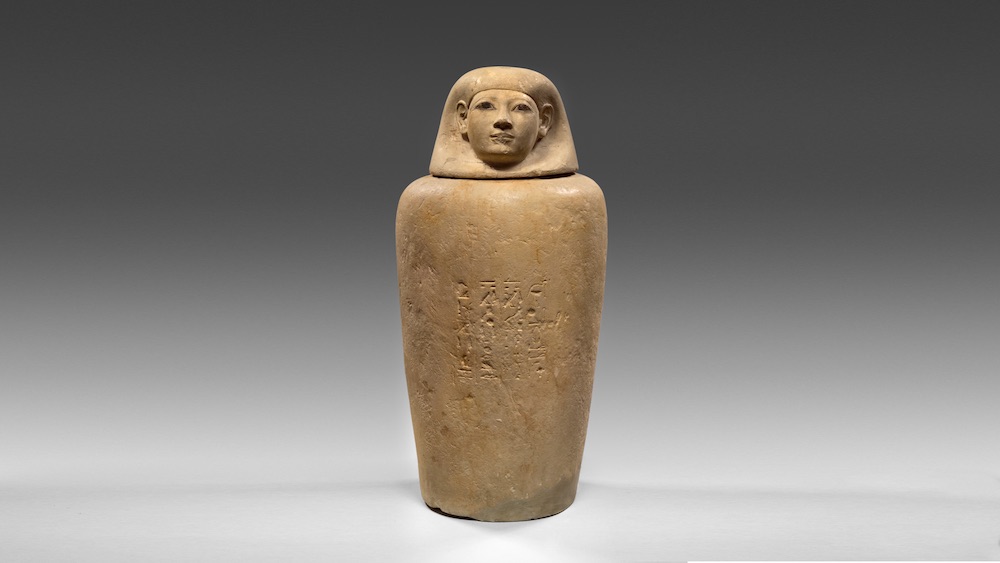Elite ancient Egyptian woman was embalmed with exotic ingredients smelling of vanilla and larch, new analysis reveals
Chemical analyses have revealed the specific components ancient Egyptians used to embalm the dead, including exotic ingredients that were acquired through trading.

Ancient Egyptians were masters at embalming and created elaborate concoctions to mummify the dead. Now, a new study reveals the lengths these innovators went to obtain exotic ingredients as part of this cultural practice — especially if the deceased were of high status.
This was the case for Senetnay, a noblewoman who worked as the wet nurse for the Pharaoh Amenhotep II during his infancy around 1450 B.C. Archaeologists discovered her burial in 1900 in the Valley of the Kings, a royal cemetery reserved for pharaohs and other elites. Alongside her mummy, researchers unearthed four lidded jars shaped like human heads that contained her organs, including her lungs and liver, according to a study published Thursday (Aug. 31) in the journal Scientific Reports.
While the organs have been lost to time, two of the jars are now part of the collection at the Museum August Kestner in Germany and were available for scientists to collect samples from by scraping residue off of the pottery. After conducting chemical analysis of the swabs, researchers uncovered a complex mix of ingredients that ancient Egyptians used to create the balms, some of which weren't native to the region.
"Many of the ingredients they used were unusual for that area, since they weren't readily available in ancient Egypt," lead author Barbara Huber, a doctoral researcher at the Max Planck Institute of Geoanthropology in Germany, told Live Science. "They most likely acquired these ingredients through trade networks."
Related: Elaborate underground embalming workshop discovered at Saqqara
The balm ingredients included things like beeswax, plant oils and animal fats — all common embalming substances. But the researchers also identified coumarin and benzoic acid in the samples swiped from both jars. Coumarin is a scent similar to vanilla that's found in cinnamons and pea plants, while benzoic acid is present in resins and gums from balsam-type plants, the researchers said in a statement.
In the jar used to store Senetnay's lungs, the scientists also found traces of two other exotic ingredients: larixol, a resin found in larch trees; and what they believe to be dammar, a fragrant gum from the wood of Pistacia trees. Their presence in the jars surprised the researchers because neither ingredient was growing in ancient Egypt at that time. Instead, larch trees were abundant in northern and central Europe and Pistacia trees were found across Southeast Asia, according to the study.
Sign up for the Live Science daily newsletter now
Get the world’s most fascinating discoveries delivered straight to your inbox.
However, the exotic ingredients have a number of properties that would have made them attractive to ancient Egyptians.
"Larch has loads of bioactive properties and is antibacterial and antimicrobial — plus it has a strong scent that can help mask decay and keep any insects away," Huber said. "It's also helpful to preserve the body in the afterlife where it can remain for an eternity. Ancient Egyptians believed that the soul could only come back if the body was intact."
The researchers noted that the ratios of the ingredients were different in both jars, but this could be the result of the "balms being unevenly mixed," Huber said.
With the list of ingredients in hand, the researchers reverse-engineered the balms. Their creation will be part of an upcoming exhibition at the Moesgaard Museum in Denmark in October called "Egypt Obsessed with Life."
"Visitors can experience the ambient scent of mummification and time travel to the past to an ancient embalming workshop," Huber said.
Jennifer Nalewicki is former Live Science staff writer and Salt Lake City-based journalist whose work has been featured in The New York Times, Smithsonian Magazine, Scientific American, Popular Mechanics and more. She covers several science topics from planet Earth to paleontology and archaeology to health and culture. Prior to freelancing, Jennifer held an Editor role at Time Inc. Jennifer has a bachelor's degree in Journalism from The University of Texas at Austin.










